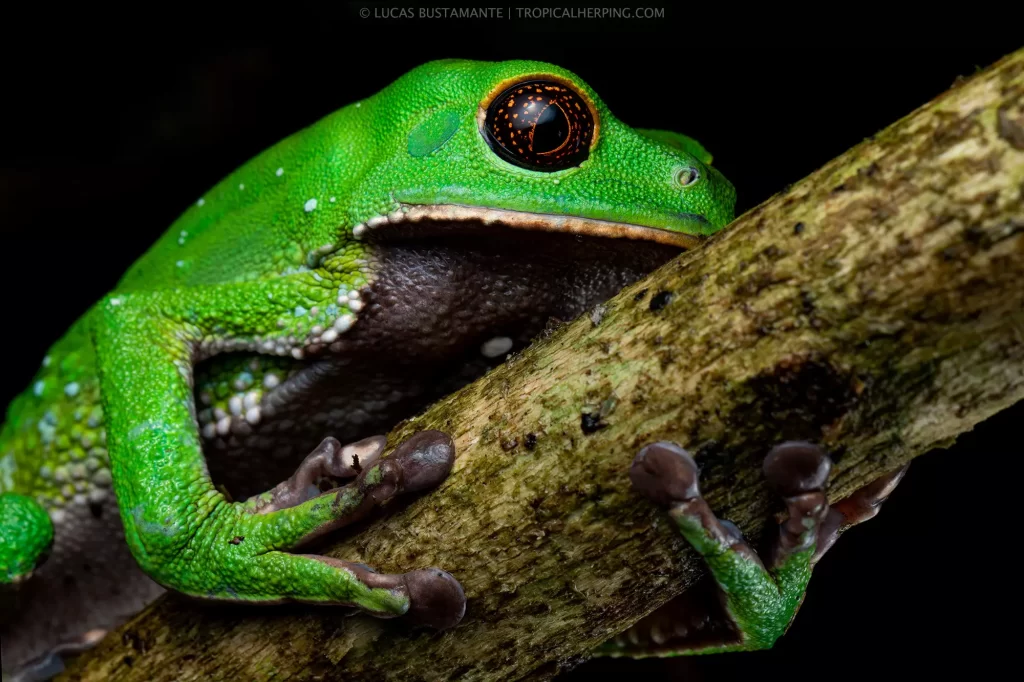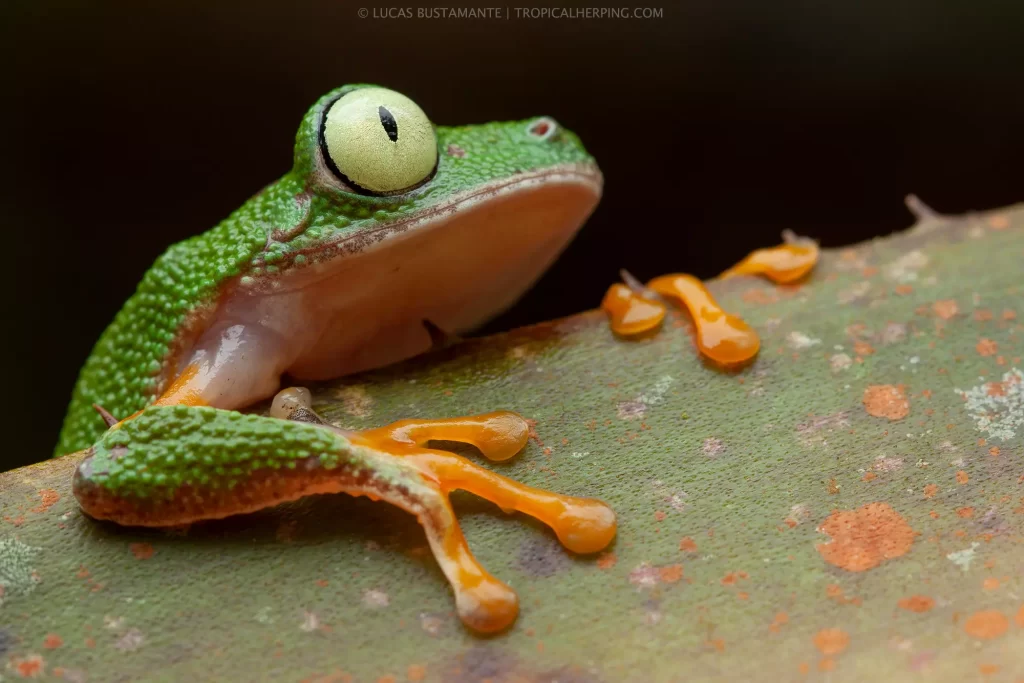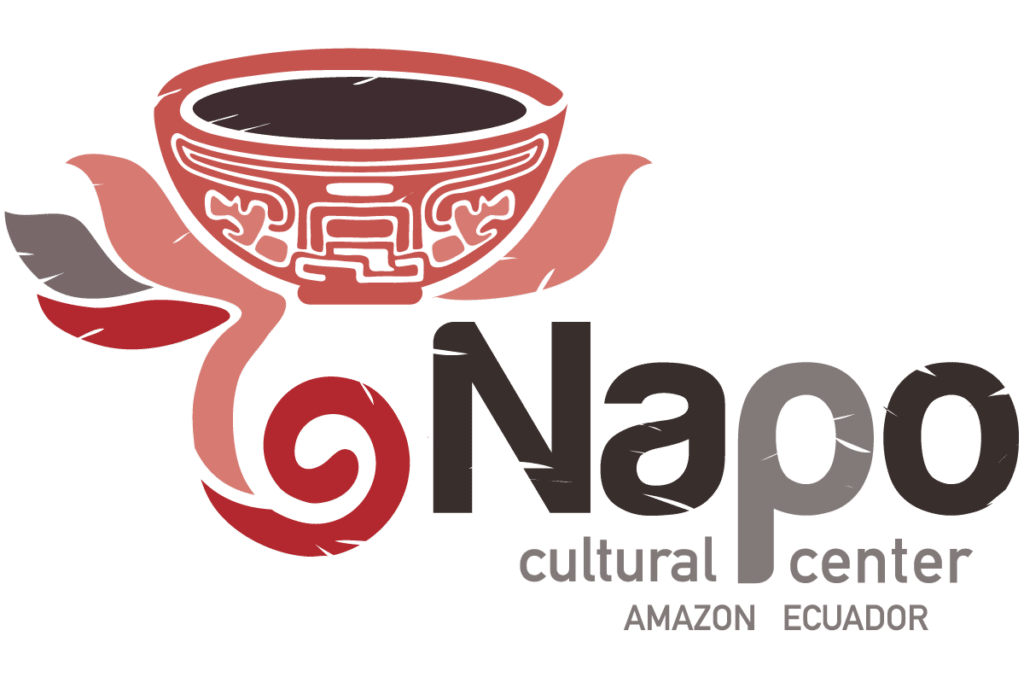En la selva amazónica de Ecuador, las ranas, o “sapos” en español, son conocidas por muchos nombres entre las tribus indígenas que llaman hogar a esta exuberante región. Aunque los lodges de la jungla pueden ofrecer bibliotecas con una gran cantidad de conocimientos sobre la vida silvestre local, uno de los volúmenes más preciados es “Sapos: Ecuador Sapodiverso” (2008), una guía completa sobre las diversas especies de ranas que habitan este ecosistema único.

Un Mundo de Anfibios
La cuenca amazónica alberga más de 1,000 especies conocidas de ranas, lo que las convierte en los anfibios más abundantes de la región. Estas criaturas son principalmente nocturnas y arborícolas, poniendo sus huevos lejos del agua para evadir depredadores. En el entorno perpetuamente húmedo de la selva, los arroyos y estanques no son necesarios para mantener la piel húmeda que necesitan para la respiración.
Las especies de ranas más antiguas se pueden encontrar en el Amazonas, con ranas arborícolas que se establecieron aquí hace 77 millones de años. La increíble diversidad de ranas en áreas como el Parque Nacional Yasuní de Ecuador, que cuenta con alrededor de 600 especies conocidas, se debe en parte a la proximidad del parque a la cordillera de los Andes. Las altitudes variadas de los bosques nubosos permiten que las especies evolucionen y migren a las tierras bajas.
Desvelando los Misterios
Muchas especies en el Amazonas aún no han sido identificadas, incluidas numerosas “especies crípticas”, especies que parecen similares pero aún no han sido distinguidas por la comunidad científica. Este fenómeno es común, no solo con ranas sino también con otras formas de vida silvestre. Recientemente, se encontró que dos especies generalizadas de ranas arborícolas se pueden dividir en más de 10 especies distintas.
Las Coloridas y las Camufladas
Las ranas más vívidamente coloreadas son a menudo venenosas. Algunas experimentan cambios de color radicales a lo largo de sus vidas o exhiben variaciones de color diversas entre las poblaciones, mientras que otras tienen colores visibles solo cuando mueven sus extremidades. La rana cornuda amazónica, por ejemplo, se alimenta exclusivamente de otras ranas, usando una estrategia de espera para capturar a su presa.
En la selva, encontrarás la rana mono del Chocó, que pone sus huevos en hojas colgando a 1.5 metros sobre el agua. La rana acuática Uco, tradicionalmente consumida por los lugareños, no ha sido vista desde 1994. También hay “ranas de cristal” con piel transparente y ranas acuáticas con aletas en lugar de extremidades. Las variaciones en color, textura, formas corporales, ojos y extremidades parecen interminables.
Los Sonidos de la Selva
Muchas ranas tienen sacos vocales para atraer parejas y defender territorios. Algunas tienen patrones que les permiten camuflarse perfectamente cuando cierran los ojos. Los ojos más grandes son más efectivos con poca luz. Las ranas pueden producir compuestos analgésicos, así como toxinas. Los huevos a menudo se ponen después de fuertes lluvias, a veces transportados en las espaldas de las ranas adultas. Las ranas de hojas están entre las más ligeras de todas las especies de ranas.
En muchas especies, los machos son siempre más pequeños que las hembras porque producir huevos requiere mucha energía. Las puntas de los dedos pegajosos, las ventosas y las manos palmeadas son comunes entre los habitantes de los árboles. Las ranas tropicales generalmente se alimentan de insectos como termitas, pero muchas comerán ranas más pequeñas o cualquier cosa que se mueva y pueda ser fácilmente atrapada y consumida.

Descubriendo el Mundo Anfibio del Amazonas
Explorar la increíble biodiversidad del Amazonas ofrece una oportunidad sin igual para presenciar estas fascinantes criaturas en su hábitat natural. Desde los misteriosos cantos que resuenan en el bosque hasta los colores vibrantes y las adaptaciones únicas de sus habitantes anfibios, el Amazonas es una sinfonía viviente de diversidad que sigue cautivando a científicos y amantes de la naturaleza por igual.
Para obtener más información sobre cómo experimentar la rica biodiversidad del Amazonas y planificar tu visita al Napo Cultural Center, contacta a nuestro equipo de expertos hoy mismo y embárcate en un viaje al corazón de la selva.




